Captain Falcon was Originally the SNES' Mascot and Other Super Nintendo Facts You Didn't Know
Interviews with key Nintendo staff unearths a treasure trove of rare game trivia.
This article first appeared on USgamer, a partner publication of VG247. Some content, such as this article, has been migrated to VG247 for posterity after USgamer's closure - but it has not been edited or further vetted by the VG247 team.
"Only '90s kids remember" … how limitations on our entertainment spun off into some very interesting creative choices. Strict censorship policies on kids' cartoons led to clever work-around jokes and emotional story-telling in shows like Animaniacs and Batman: The Animated Series. Similarly, hardware limitations on our favorite game consoles led to design choices and iconic imagery that's still beloved today.
You may already know Mario has a mustache because it saved Nintendo the effort of forming a realistic nose and mouth out of chunky low-res pixels, but did you know the SNES' hardware limitations are the reason why F-Zero is set in the future? Or why Super Mario Kart uses go-karts in lieu of traditional vehicles?
In honor of the SNES Classic Edition hitting stores, Nintendo published a series of interviews recalling the design choices behind Star Fox / Star Fox 2, F-Zero, Super Metroid, and Super Mario Kart. There's a lot of additional trivia that's pretty neato, too.
Here are ten new things we learned about the SNES and its games:
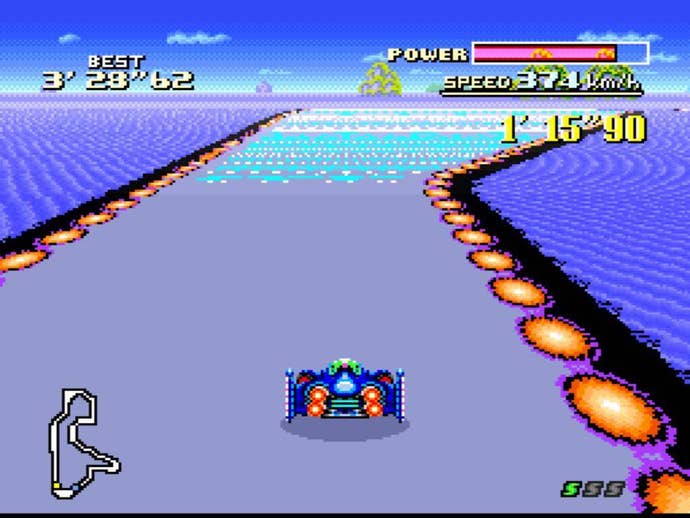
F-Zero is set in the far future because rendering tires took up too many resources
F-Zero director Kazunobu Shimizu says he always wanted the Mode-7 racing game to take place in a cool and slick-looking future world – like "the one portrayed in the Batman movie." But the team had to take the game's setting way into the future when it became clear animating tire sprites was a huge undertaking.
"I was making pixel art for the cars one by one. What's more, I had to create them in different patterns when they're seen from various angles," recalls designer Takaya Imamura. "The total number of frames for that alone was staggering. So we decided to lose the tires and have the racers hover."
Shimizu also says the team made a very purposeful choice to make the cars blow up as loudly as possible when you screw up. Thanks for that, guys.
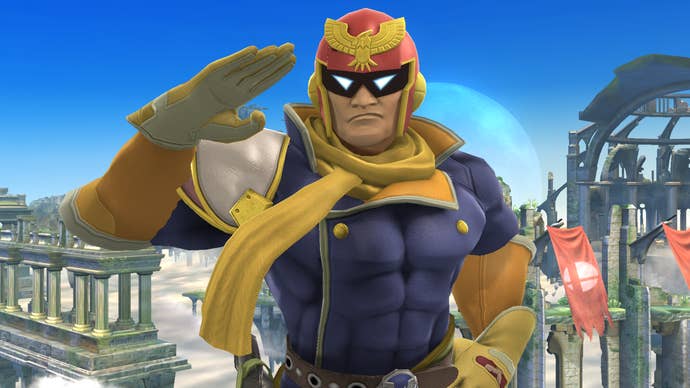
Captain Falcon was originally the mascot for the SNES / Super Famicom
The lead racer for the F-Zero series (and Smash Bros' King of Punching) wasn't born to fly. He was initially created to hawk the SNES.
"Even most people at Nintendo don't know that," says Imamura. "When development of F-Zero was almost complete, I was doing a bunch of illustrations and someone expressed a desire to make a mascot character for Super NES, with a name like Captain Something. So I started thinking about a character who would match the colors of the Super Famicom controller, with some red and blue and yellow."
("Something-PAAAUNCH!")
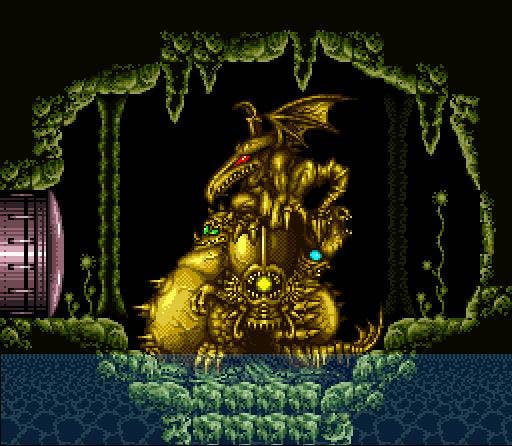
The "baby Metroid rescue" at the end of Super Metroid was a little controversial at first
Super Metroid is one of the best action games on the SNES (and of all time, frankly), and its climax – wherein the baby Metroid Samus initially saved rushes in to defend her from Mother Brain, with fatal consequences – is an iconic bit of wordless storytelling. It had its critics, though.
"I asked people around me about that, and some said that being unable to do anything wasn't good for a video game, but I really wanted to do that," says Super Metroid director Yoshio Sakamoto. "I really wanted to put in that scene, just like in a movie, in which the baby Metroid comes to help just when you're desperate and wondering what to do."
Given the scene's enduring popularity, the payoff was worth the anxiety. "As far as that effect goes, I'm glad I did that," says Sakamoto.
A lot of thought went into the baby Metroid's vocalizations
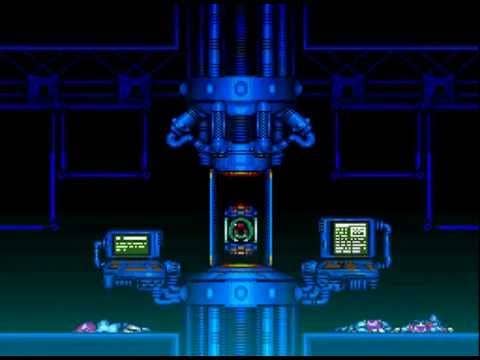
The baby Metroid's soft "scree!" makes it easy to love the little critter, even though it's a floating blob of death. That's by Sakamoto's design. We're supposed to feel attachment and pity for the hatchling. After all, it's a helpless infant when Samus first finds it.
"Sakamoto was (…) extremely picky about the sound of the baby Metroid," says Super Metroid's sound designer, Kenji Yamamoto.
Sakamoto concurs. "For example, after the baby Metroid swoops at Samus and you realize that it thinks of her as its mother, it makes an uneasy sound like 'Pwee! Pwee!' And when it gets shot, it makes a pained sound like 'Pweeeee!' They're all 'pwee' sounds, but I wanted them to convey different emotions depending on the situation."
I still say it's more of a "scree!" than a "pwee!", but Sakamoto's the boss.
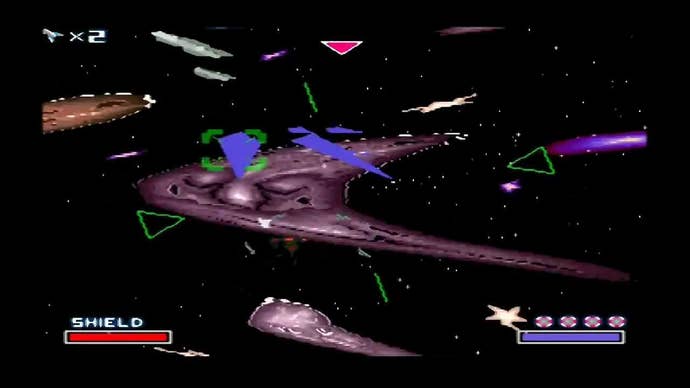
The paper airplanes in Star Fox's "Out of This Dimension" stage were originally paper cranes
Star Fox pushed the SNES's hardware to its very limits. Unsurprisingly, a lot of cutbacks had to be made in the final product. One example: The paper airplane enemies that fold themselves in the bizarre "Out of This Dimension" level were initially meant to be traditional Japanese paper cranes.
"I was talking about how fun it would be to have paper cranes fold," says legendary game developer Shigeru Miyamoto. "It didn't work. Pieces of paper fold into airplanes and fly around. We experimented with various things and thought it would be a waste to simply throw away what was left over, so we packed them into that bonus stage."
The very concept of the "Out of This Dimension" level is kind of disturbing. When you're pulled into it, General Pepper desperately says Star Fox is needed to defend Corneria against Andross, but there's no indication you can leave the dimension. You're stuck there forever.
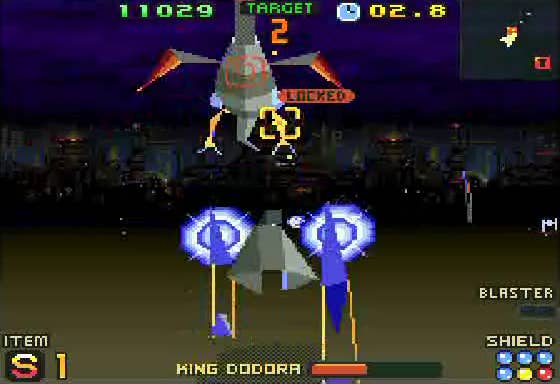
Another reason Star Fox 2 wasn't released in 1995: A high price tag
Breaking news of the SNES Classic Edition's existence wasn't surprising, but the additional news that it contains the previously-unreleased Star Fox 2 was very surprising. While the completed game was pulled off the SNES' line-up for several well-known reasons (which Nintendo goes over in its interview about Star Fox 2), there's a lesser-known reason: The Super FX 2 chip necessary to display Star Fox 2's advanced graphics would've jacked up the game's price significantly.
"Nintendo 64 was hardware geared for polygons, but Super NES wasn’t, so we were going to have to add a chip—the Super FX 2 with double memory—raising the price," says Miyamoto.
I paid exorbitant prices for 16-bit RPGs, but RPGs last for hours. I doubt I would've shelled out extra cash for Star Fox 2, which is a comparatively short game. And, as Miyamoto points out, the N64 was near. I was probably saving up for it by then.

The SNES's curved controller is designed to let anyone be comfortable gripping it, especially kids
To look upon the boxy, sharp-cornered NES Controller is to feel nostalgia, but Nintendo decided early into the Super Famicom's development that it wanted an ergonomic controller. Hence, curves.
"[T]he design of the round ends, where you hold it, makes it easier for small children to grip the controller wherever they want," says Miyamoto. "We shaped it that way so it would be easy to hold for any hand size."
I prefer the SNES controller over the NES controller, but Sony's DualShock 4 is the one controller to rule them all.
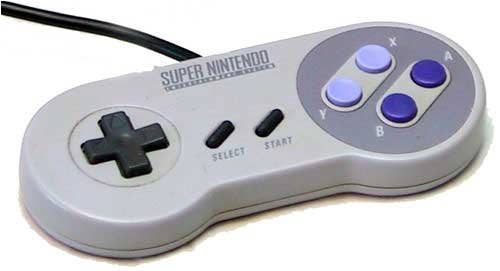
Miyamoto is impressed by the SNES's concave X and Y buttons
Miyamoto helped design the Super Famicom, but when the hardware was re-designed for North American audiences, the engineers on our shores literally took matters in their own hands. That's why North American Super Nintendo systems have concave (indented) X and Y buttons. This design decision impressed Miyamoto, though he was a little disappointed to see Japan's colorful buttons get traded out for two shades of purple (same, Miyamoto).
"By making [the buttons] concave, you can tell the difference between the primary and secondary buttons without looking at the controller," he says. "That was impressive. I realized America has some outstanding industrial design. But I was sorely disappointed that I couldn’t call it the Red button!"
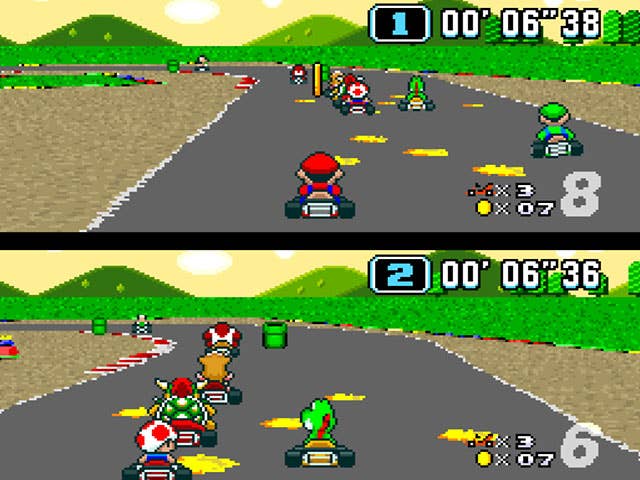
Super Mario Kart utilizes go-karts instead of traditional racing vehicles because of the SNES' hardware limitations (again)
Finally: What inspired Nintendo to design a kart-racing game instead of a more traditional racer? What else? Hardware limitations!
Mario Kart developers Tadashi Sugiyama and Hideki Konno were tasked with making a two-player F-Zero title. They quickly discovered the SNES was incapable of making a high-speed split-screen racing game with long tracks – but the job became much more manageable when they opted for wider, more twisted tracks and slower vehicles.
"If you look back at the Super Mario Kart tracks, you'll understand. Instead of tracks with long straight lines, the track designs are compact, with lots of twists and turns so they fit well within a square," says Konno. "And about the only vehicle that made sense within such tightly woven courses were karts."
That, children, is the reason why you're guaranteed to see at least one person wearing a red hat and a pair of overalls at a go-kart track.


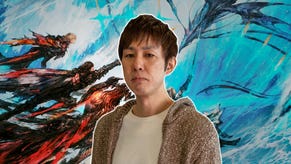




_ddwYK80.png?width=291&height=164&fit=crop&quality=80&format=jpg&auto=webp)

